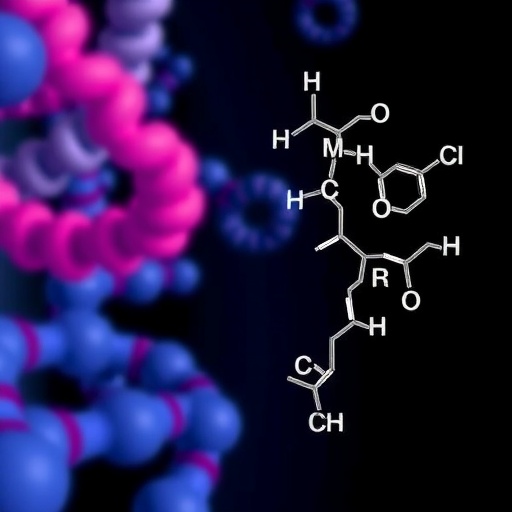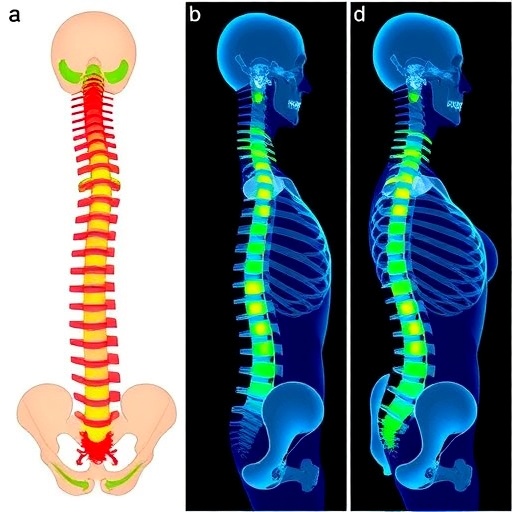In an exciting development in the field of computational drug design, a team of researchers has unveiled a groundbreaking study that employs advanced methodologies to target matrix metalloproteinase-13 (MMP-13), a crucial enzyme implicated in numerous pathological conditions, including osteoarthritis and cancer metastasis. The paper, set to be published in Molecular Diversity, combines machine learning, molecular docking, and molecular dynamics simulations to create novel MMP-13 inhibitors. This innovative approach not only highlights the potential of computational techniques in drug discovery but also offers a glimpse into the future of personalized medicine.
Matrix metalloproteinases (MMPs) are a family of enzymes that play a pivotal role in the remodeling of the extracellular matrix. Among them, MMP-13 is particularly notorious for its involvement in the degradation of collagen, which is a vital protein in connective tissues. The overexpression of MMP-13 has been linked with various diseases, making it a prime target for therapeutic intervention. Understanding this enzyme’s structural and dynamic properties is crucial for the development of effective inhibitors.
The researchers utilized machine learning algorithms to sift through vast datasets, identifying novel chemical compounds that could effectively bind to the active site of MMP-13. These algorithms, powered by data-driven methodologies, can analyze chemical properties and biological interactions much more efficiently than traditional methods. By training the models with existing chemical libraries, the team was able to predict which compounds would yield the most promising results in terms of binding affinity and specificity towards MMP-13. This paradigm shift in drug discovery showcases the substantial role of artificial intelligence in modern science.
Once the potential inhibitors were identified, the next step involved molecular docking simulations. These simulations allow researchers to visualize how well the predicted compounds could fit into the MMP-13 active site. Docking studies are fundamental in assessing the binding interactions between drugs and their target proteins, as they provide insights into the molecular interactions that govern these relationships. This iterative process of refinement ensures that only the best candidates, with the highest likelihood of success, move forward in the drug development pipeline.
Molecular dynamics (MD) simulations represent another critical phase in the research. While docking provides a static snapshot of binding interactions, MD simulations offer a dynamic view of how these interactions evolve over time. By simulating the physiological conditions in which these inhibitors would operate, the researchers were able to evaluate the stability and efficacy of their compounds, providing real-time insights into conformational changes and potential side effects. This holistic view underscores the importance of considering both structure and dynamics in the drug development process.
Furthermore, the study emphasizes the interdisciplinary nature of modern pharmaceutical research. By merging the fields of chemistry, biology, and computer science, the researchers were able to leverage the strengths of each discipline. This synergistic approach fosters innovation, allowing for the rapid development of targeted therapies. As a result, the research team not only made strides in developing MMP-13 inhibitors but also set a precedent for future studies aiming to tackle other more complex targets.
Collaboration played a vital role in this research endeavor, as the project saw the convergence of expertise from various research institutions. Each member of the team contributed their unique skill set, allowing for a comprehensive understanding of MMP-13’s role in disease pathology and the potential avenues for therapeutic intervention. Such collaborative efforts are essential for overcoming the multifaceted challenges associated with drug development, highlighting the importance of teamwork in scientific advancement.
The implications of this research extend beyond the immediate findings. As the global population ages, the prevalence of diseases like osteoarthritis is expected to rise. Therefore, developing effective MMP-13 inhibitors could significantly improve quality of life for millions of individuals. The potential applications of these findings could also extend to oncology, where inhibiting MMP-13 might reduce tumor invasiveness and metastasis. Thus, the study not only contributes to our understanding of a specific biochemical pathway but also paves the way for broader therapeutic applications.
Moreover, the study raises the bar for future research in computational drug design. The methodologies employed are adaptable and can be applied to a myriad of other targets within the pharmaceutical landscape. As new databases and computational tools emerge, researchers have the ability to explore even more complex biochemical interactions, potentially revolutionizing the field of drug discovery. The framework established by this research could inspire a new wave of innovation aimed at targeting difficult-to-drug proteins.
The authors of the study are optimistic about the next steps. With promising results from initial trials of their MMP-13 inhibitors, they plan to move forward with testing in vivo models to assess efficacy and safety in a biological context. Subsequently, these findings could lead to clinical trials that would bring novel therapeutics from the laboratory to the clinic. In doing so, the research holds the promise of transforming not just the treatment but also the management of diseases that afflict millions.
As we stand on the brink of a new era in drug development, this research exemplifies the extraordinary possibilities that exist when advanced computational techniques unite with the timeless quest for new therapies. The integration of machine learning, molecular docking, and molecular dynamics heralds a future where precision medicine becomes a reality, with the ability to develop therapies tailored to an individual’s unique biological makeup. In essence, this study underscores the importance of innovation as a catalyst for change in the ongoing battle against disease.
In conclusion, the culmination of these innovative approaches offers not just hope but also a tangible path forward in the fight against diseases reliant on MMP-13 activity. As the study continues to draw interest from the wider scientific community, it may very well inspire further research that builds upon these foundational findings. The art and science of drug discovery are undoubtedly evolving, and with it comes the promise of innovative solutions to some of the world’s most pressing health challenges.
Subject of Research: Computational design of MMP-13 inhibitors using a combined approach of machine learning, docking, and molecular dynamics.
Article Title: Computational design of MMP-13 inhibitors using a combined approach of machine learning, docking, and molecular dynamics.
Article References:
Manan, A., Ilyas, S., Kim, E. et al. Computational design of MMP-13 inhibitors using a combined approach of machine learning, docking, and molecular dynamics. Mol Divers (2025). https://doi.org/10.1007/s11030-025-11358-5
Image Credits: AI Generated
DOI: 10.1007/s11030-025-11358-5
Keywords: MMP-13, drug discovery, machine learning, molecular dynamics, computational biology, inhibitors, collagen degradation, osteoarthritis, cancer.
Tags: AI-driven drug designcancer metastasis therapiescomputational drug discoverydata-driven methodologies in medicinemachine learning in pharmacologymatrix metalloproteinases researchMMP-13 inhibitorsmolecular docking techniquesnovel chemical compounds identificationosteoarthritis treatment strategiespersonalized medicine advancementsstructural biology of enzymes





